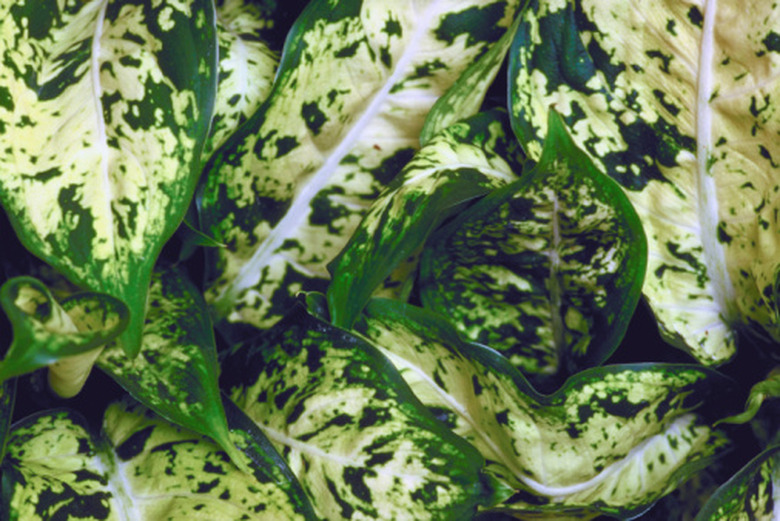How To Split A Dieffenbachia Plant
Things Needed
- Garden shears
- 5-inch garden pot
- Peat moss
- Coarse sand or perlite
- Wire coat hanger
- Plastic bag
- Rubber band
- Liquid fertilizer
- 8-inch planter
- Potting soil
Dieffenbachia, or Dumb-cane, can grow up to five feet tall if provided with proper care. Some of the mature plants produce a white colored flower that does not have a pleasant smell, and it is best to remove the flower and discard it. The several different species of this more common house plant can produce different colors of foliage ranging from dark green to green with white or cream colored spots. Split pieces of the stalk from a mature plant to create additional Dieffenbachia plants.
Step 1
Cut a 4-inch section from the main stem with garden shears. Choose a section that contains a growth bud for a new leaf.
Step 2
Fill half of a 5-inch garden pot with peat moss and fill the remainder of the pot with coarse sand or perlite. Mix the peat moss and the sand or perlite together. Add water to moisten the mixture in the pot.
- Dieffenbachia, or Dumb-cane, can grow up to five feet tall if provided with proper care.
- Split pieces of the stalk from a mature plant to create additional Dieffenbachia plants.
Step 3
Lay the section of Dieffenbachia horizontally on top of the mixture in the garden pot. Ensure the growth bud faces up.
Step 4
Bend a length of coat hanger wire into a U-shape and stick it into the garden pot. Place a plastic bag over the garden pot containing the section of Dieffenbachia, letting the coat hanger support the plastic bag. Secure the bottom of the plastic bag to the garden pot with a rubber band.
Step 5
Place the section of Dieffenbachia in bright sunlight for four to six weeks until the section roots. Remove the bag from the new plant and water it to keep the mixture in the pot moist. Apply liquid fertilizer every two weeks until the 5-inch plant pot fills with roots from the cut section.
- Lay the section of Dieffenbachia horizontally on top of the mixture in the garden pot.
- Place a plastic bag over the garden pot containing the section of Dieffenbachia, letting the coat hanger support the plastic bag.
Step 6
Move the new Dieffenbachia plant to an 8-inch planter filled with potting soil. Cover the newly rooted section with soil and treat the Dieffenbachia as a mature plant.
Warning
Wash your hands thoroughly after handling the stalks. The sap is poisonous, causing swelling inside the mouth, pain and temporary loss of speech.
References
- "Reader's Digest Success with House Plants"; Anthony Huxley; 1979
